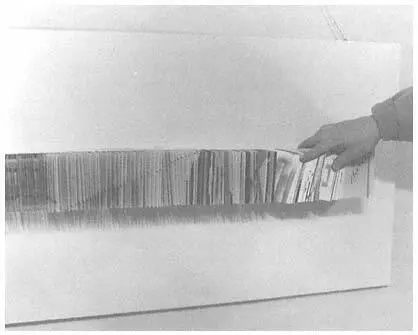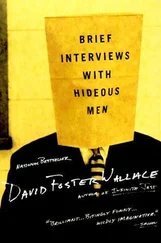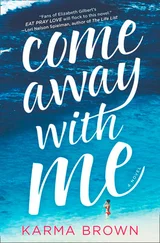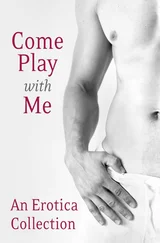Scott MacDonald - A Critical Cinema 2 - Interviews with Independent Filmmakers
Здесь есть возможность читать онлайн «Scott MacDonald - A Critical Cinema 2 - Interviews with Independent Filmmakers» весь текст электронной книги совершенно бесплатно (целиком полную версию без сокращений). В некоторых случаях можно слушать аудио, скачать через торрент в формате fb2 и присутствует краткое содержание. Год выпуска: 1992, ISBN: 1992, Издательство: University of California Press, Жанр: Прочая документальная литература, на английском языке. Описание произведения, (предисловие) а так же отзывы посетителей доступны на портале библиотеки ЛибКат.
- Название:A Critical Cinema 2: Interviews with Independent Filmmakers
- Автор:
- Издательство:University of California Press
- Жанр:
- Год:1992
- ISBN:9780585335100
- Рейтинг книги:3 / 5. Голосов: 1
-
Избранное:Добавить в избранное
- Отзывы:
-
Ваша оценка:
- 60
- 1
- 2
- 3
- 4
- 5
A Critical Cinema 2: Interviews with Independent Filmmakers: краткое содержание, описание и аннотация
Предлагаем к чтению аннотацию, описание, краткое содержание или предисловие (зависит от того, что написал сам автор книги «A Critical Cinema 2: Interviews with Independent Filmmakers»). Если вы не нашли необходимую информацию о книге — напишите в комментариях, мы постараемся отыскать её.
A Critical Cinema 2: Interviews with Independent Filmmakers — читать онлайн бесплатно полную книгу (весь текст) целиком
Ниже представлен текст книги, разбитый по страницам. Система сохранения места последней прочитанной страницы, позволяет с удобством читать онлайн бесплатно книгу «A Critical Cinema 2: Interviews with Independent Filmmakers», без необходимости каждый раз заново искать на чём Вы остановились. Поставьте закладку, и сможете в любой момент перейти на страницу, на которой закончили чтение.
Интервал:
Закладка:
Jamestown
I thought I could escape this supposed truth by having lower and higher forms in the same film: I could combine all levels of experience and all levels of ambition, from low vaudeville to high art, to make an analogy for real life. It was a great rationale for combining all my urges: to cartoon, to allude to my experiences in various degrees of depth and penetration, and to integrate all that stuff into a unit of experience by means of pacing, rhythm, and texture.
MacDonald:
I guess I assumed that the more obvious politicalness of it had something to do with your coming back to this country and becoming reimmersed in American political life.
Breer:
Well my politics were extremely simplistic. For all of my Marxist artist friends, Marxism didn't really take seriously on me. I had conventional liberal viewsI still have them, I guesswhich
are
pretty cool on capitalism. I'm very antiauthoritarian, but I've never sorted out my politics, and I'm always embarrassed to put politics up front in a film.
At one time I was hired to do twenty political cartoons for PBL [Public Broadcast Laboratory], when they had their Sunday night prime time series on big issues: birth, death, and so forth. David Brenner was the producer. Two of the cartoons got done:
PBL 2
[1968], the one about racism; and
PBL 3
[1968], about television. I have only a magnetic striped copy of
PBL 3
. The series was promising, but it got axed. The fourth show was going to deal with the Pentagon, and it was going to be a fairly critical, liberal view of the Pentagon. Word came from Washington that all the footage had to be prescreened, and everybody was embarrassed. That, along with the roasting the series got in the public press, ended the project.
I found that those little cartoons came easily, but I also suspected myself. I suspect pieties; I suspect the motivation behind the pieties. So I'm always a little embarrassed and suspicious of myself when I do polemical projects. I've gone South without
PBL 2
just so I wouldn't trade on easy political emotion. A really political person gets off on relationships to large social movements. That's not my thing, and yet I feel that at times the elitism of Pure Art needs to be questioned too, and put in its place.
Page 28
MacDonald: Jamestown
and
Recreation
use a lot of junk art, trash art, assemblage in a way that moves the films in a diaristic direction. We get a sense of your environment.
Eyewash,
which was made right after those films, uses a highly edited, gestural style, with obviously personal imagery, a method exploited so effectively by Stan Brakhage and Jonas Mekas.
Fist Fight
has some of that feeling too, but in
Eyewash
the feeling of you moving
through
an environment seems more powerful.
Breer: Eyewash
was the last film I did in Paris. I was back here when I made the soundtrack. I wanted to send it to a festival in Germany that wouldn't accept films without soundtracks. That annoyed me, just as an idea. So I did a soundtrack but kept it separate from the film. I planned to send the two things to them separately, and say, ''Here's my fucking soundtrack; play that,
then
show the film," but I never sent it.
The soundtrack is called "Earwash," by the way; it's exactly the same length as the film. This was a case where I thought I'd use a collaborator, get in touch with musique concrètejust a vague idea. I found out about a guy who ran a series of new music events at the YMCA on Ninety-second Street, New Music for Our Time, something like that. It might still be going. Max Polakoff his name was. He was a violinist. I called him explaining that I had a little film and was looking for somebody to do the sound track. He met with me and saw the film and wanted to do it. I don't know, violin didn't seem appropriate to me, but I figured I could edit what he did. We went to [D. A.] Pennebaker's studio and Polakoff improvised on a violin while he looked at the film. I thought, "Oh shit." But he was a good musician and respected in New York, and there was no way I could politely disengage myself. Later, he wanted to show the film at the music series. I hadn't yet heard the mix; we'd just gotten it back from the studio. As things turned out, it'd been overmodulated. It was too loud and sounded like a cat being pulled through a knothole. We didn't hear it until we played it that night for the audience, a full house. Before the presentation Polakoff dragged me onto the stage. I muttered something about keeping the sound separate from the picture because I didn't want the sound to interfere with the movie. Everybody giggled when they heard that, except Max. What I was saying must have seemed aggressive to him. Anyhow, we played the track and it sounded awful; then watched my film, and went on with the rest of the program. The next day newspapers wrote up the event. The music critics didn't give a shit about the film, but really roasted Max. I called to apologize for the lousy reproduction of the sound, but he didn't want to speak to me, and I haven't seen him since. And I haven't used the sound since.
MacDonald:
How did you come to do mutoscopes?
Page 29

One of Breer's mutoscopes.
Breer:
When I was back here in America in 1957, I was thinking about buying a mutoscope. Somebody told me to look up this guy on Tenth Avenue who had a big collection of them, along with pinball machines and other penny arcade stuff. I went to see him and got a price on a mutoscope. I think it was twenty-five dollars, which was a lot of money in those days. I had to go home and think about it. When I called him up, he told me that while I'd hesitated, Disney people had bought almost all of them for Disneyland. The price of the few he had left had gone up to seventy-five dollars. I said the hell with it, and decided to make my own.
Shortly after I went back to France, I started making mutoscopes. The first was made out of a cigar box: paper was glued in a cross section of a broomstick with slots in itprobably a hundred images in all. It was restored by Pontus Hulten a while ago: it's become a museum relic. Anyhow, I made a bunch. They were big contraptions, sculpted on the edges so that just sitting there they were interesting as shapes. When you cranked them, the shapes would make for a kind of flowing change. I still have one. The rest fell apart.
Page 30
When I got back to America, I was interested in having a show of films and objects. I found a vinyl that looked and felt just like paper, but was a lot tougher, so the subsequent mutoscopes were made with vinyl leaves, and I improved the mechanism too. I mass-produced a bunch of boxes and cranks for them, and I showed them [in 1965] at the Bonino Gallery, along with a lot of other kinetic sculpture (an earlier show of the paper mutoscopes had been scheduled in a Paris gallery in the spring of 1958 but never happened). I never made any more mutoscopes after that.
One guy wanted to exploit the mutoscopes as toys. He thought he could peddle them as a do-it-yourself kit for children. He did a patent search on his own and found out that I had come up with a couple of patentable items. I'd made some improvements on the 1898 model. Of course, I didn't have any delusion that I was inventing anything entirely new. I just thought I could explore my ideas about continuity and discontinuity. One of the advantages of the mutoscope was that you could sit there cranking the same cycle over and over and, through subjective changes, you would discover new images, so the piece would seem to be constantly renewing itself. I never thought of the mutoscopes as replacements for cinema. They were a way to get the magic of flip cards out of the flip-book into a contraption that was easier to work with, could be nailed down in an art gallery, and could work in daylight. I also liked that you could stop on a frame and study it. Mutoscopes had certain advantages over just plain film. I also did a few wall pieces that you riffle your hand along, a variation.
Читать дальшеИнтервал:
Закладка:
Похожие книги на «A Critical Cinema 2: Interviews with Independent Filmmakers»
Представляем Вашему вниманию похожие книги на «A Critical Cinema 2: Interviews with Independent Filmmakers» списком для выбора. Мы отобрали схожую по названию и смыслу литературу в надежде предоставить читателям больше вариантов отыскать новые, интересные, ещё непрочитанные произведения.
Обсуждение, отзывы о книге «A Critical Cinema 2: Interviews with Independent Filmmakers» и просто собственные мнения читателей. Оставьте ваши комментарии, напишите, что Вы думаете о произведении, его смысле или главных героях. Укажите что конкретно понравилось, а что нет, и почему Вы так считаете.











